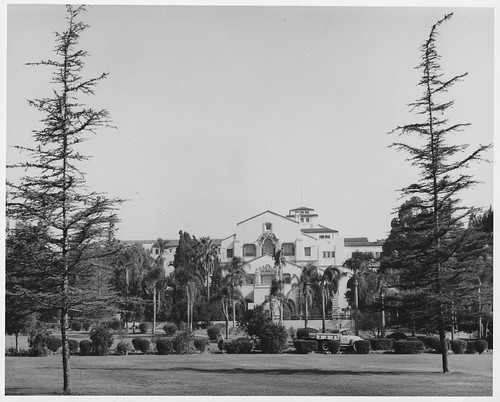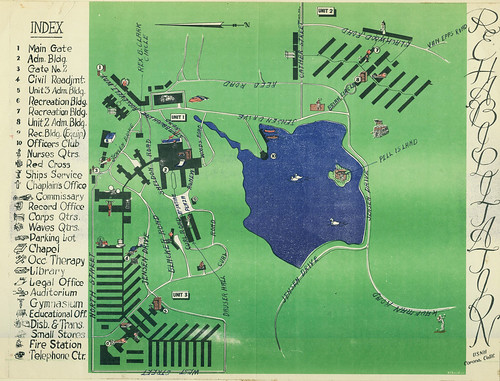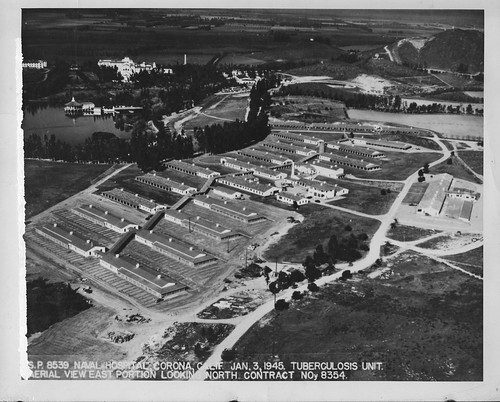
Some images of Naval Hospital Corona were missed in our 2009 scanning project, and I've just scanned and put them online here.
Here's some information on the hospital that Andre Sobocinski posted last year:
As a Navy hospital commissioned in World War II, Corona was unique. It was not uncommon for the Navy to take over hotels and even on one occasion a former estate, but the hospital established at Corona was different. Constructed in the 1920’s as a luxury hotel and resort called the Norconian, it owed more to San Simeon than to the Ritz. And like Hearst’s home, it served as the playground for the who’s who of Hollywood.
Architecturally, it offered guests a festival of wrought iron, art deco, and Spanish elements complete with resplendent pillars, marble floors, and lavish Heinsbergen murals. Guests could stay in one of the luxurious 250-bedrooms, and access Louis IV-inspired lounges, dining rooms, bath houses and Olympic-sized pools, and of course, a man-made lake. These amenities would later play a pivotal role in the rehabilitation of hundreds of thousands of wounded servicemen returning home from World War II and later the Korean War. It is remarkable that many of these amenities and architectural features like the murals still exist at the old property today.
 As a military hospital, Corona proved to be a rarity among its Army and Navy counterparts in that it had a Hollywood star as a chairman of its Naval Aid Auxiliary Hospital Visiting Committee. Kay Francis, once the most highly paid star in Hollywood, headed this cultural affairs committee. Every Thursday, Francis would bring “friends” such as Humphrey Bogart, James Cagney, Claudette Colbert, Cary Grant, Red Skelton, and others, to the hospital to meet with patients. And thanks to her connections, the hospital hosted numerous radio programs, big band concerts, and USO shows.
As a military hospital, Corona proved to be a rarity among its Army and Navy counterparts in that it had a Hollywood star as a chairman of its Naval Aid Auxiliary Hospital Visiting Committee. Kay Francis, once the most highly paid star in Hollywood, headed this cultural affairs committee. Every Thursday, Francis would bring “friends” such as Humphrey Bogart, James Cagney, Claudette Colbert, Cary Grant, Red Skelton, and others, to the hospital to meet with patients. And thanks to her connections, the hospital hosted numerous radio programs, big band concerts, and USO shows. In the 1950’s, the hospital was used by the Navy as a testing bed for new techniques in Occupational and Physical therapy, and the treatment of diseases like tuberculosis. In fact, the Navy saw fit to use the hospital as setting for several important educational and training films now found at the National Archives. Some of these films even featured the celebrities that frequented the hospital in World War II.
In the 1950’s, the hospital was used by the Navy as a testing bed for new techniques in Occupational and Physical therapy, and the treatment of diseases like tuberculosis. In fact, the Navy saw fit to use the hospital as setting for several important educational and training films now found at the National Archives. Some of these films even featured the celebrities that frequented the hospital in World War II.
No comments:
Post a Comment